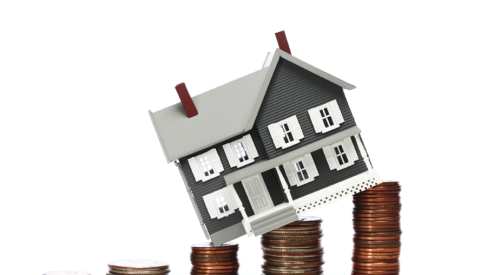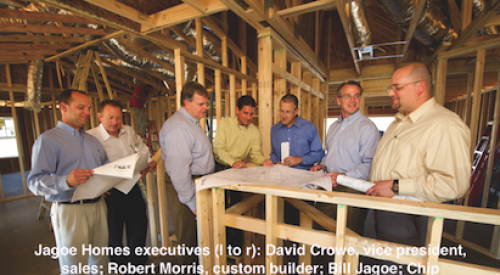First, Do No Harm
By Scott Sedam, TrueNorth Development
Hoping for something provocative to read on a long trip, I picked up a book of short essays by Kurt Vonnegut. I have always felt an unwarranted kinship to him simply because I recall going to Vonnegut Hardware in Indianapolis as a kid with my dad, where Kurt worked summers growing up.
In his controversial novels of the '70s and '80s, Vonnegut had a talent for penetrating to the heart of an issue in irreverent ways - so poignant that you feel like laughing and crying at the same time. He is the closest thing to Mark Twain since, well, Mark Twain.
I was reading his account of a speech he presented to students at MIT, and he remarked, "It was one of the few times I felt I might just change the world in some small but important way." The idea that really knocked me back was when he suggested that all the brilliant minds at MIT should have to subscribe to something like the Hippocratic Oath, as medical school graduates do. The well-known paraphrase is, "First, do no harm."
Vonnegut spoke of physicists, chemists and biologist, and of the awesome power they had to use their knowledge and research for good - or bad. He also spoke in the same terms about engineers and architects, and the responsibility for all to do no harm to people, the environment, even societies, in the pursuit of commerce or the fulfillment of a vision - either yours or someone else's.
I quickly jumped that thought over to the present economic debacle and the crash of the building industry. Just imagine if the Wall Street financiers, the bond-rating companies, the mortgage company executives and yes, every member of Congress, began each day with the conviction, "First, do no harm," and truly meant it. None of this mess would have happened.
Before long, I was thinking of builders, especially the nationals, most of which looked the other way when they realized that what was happening was unsustainable, and that something was rotten in Denmark, and Chicago, Dallas, Miami and Topeka, Kan. And it carries down to the most essential basic of the business: the salesperson who pushes a family into a house they cannot afford; the superintendent who cajoles a trade for free work to cover his mistakes; a purchasing manager who unfairly shows one supplier's bid details to another.
What if all of us, each day, began with a sincere dedication to, First, do no harm? Could it really make a difference? In the Lean building world, we would pursue the goal of always making the house better, or at least not hurting it in some way, as we strive to reduce cost in product and process. So much of what I see out there trying to pass for Lean misses this basic principle. Ironically, Vonnegut said his words fell on deaf ears at MIT. I suppose mine will too, but I can't help thinking.
Does Energy Efficiency Jeopardize IAQ?
By David Johnston, What's Working
In the race to reduce energy use and carbon in the residential housing arena, I'm concerned that we're playing down the importance of indoor air quality in homes. One of the reasons green building took off in the marketplace the way it did is that green treated the house as a system. According to market research, the second most important driver for homeowners to buy a green home is improved indoor air quality, especially when children are in the house.
Indoor air quality assaults come from various sources - organic sources like mold, animal dander and pollen, and inorganic sources like the synthetic chemicals that are in building products and furnishings. On the organic front, mold is the biggest culprit and can actually be caused by botched energy conservation retrofits that trap moisture in the walls and other building cavities.
On the inorganic front, urea formaldehyde is the number-one issue, according to the California Air Resources Board. Formaldehyde is a known human carcinogen and a strong eye, nose, throat and lung irritant. Many products used inside homes - including particleboard, cabinets, countertops, stair treads and shelving - are glued together with urea formaldehyde that can off-gas for years.
Other known carcinogens are standard fare in new construction and remodeling: synthetic rubber in carpet; vinyl chloride used to make PVC for flooring materials and shower curtains; and plasticizers that make vinyl pliable. The tighter we make our homes the more concentrated these chemicals become.
At a recent medical conference, it was reported that the average American carries up to 400 synthetic chemicals in their body at any given time. Several of these chemicals, like vinyl chloride, are also found in fish that have never seen land. Exposure to synthetic chemicals is becoming a global epidemic with unknown consequences.
How To Out-Behave the Competition
By Charlie Scott, Woodland, O'Brien & Scott
Want an excellent book to read? Try Dov Seidman's "How: Why How We Do Anything Means Everything... in Business (and in Life)." This book wonderfully describes how products and services can easily be copied by competitors. The only "thing" that the competition cannot copy is human behavior - how you do what you do. As such, Seidman theorizes that the only way to consistently outperform the competition is to out-behave the competition.
This out-behaving concept is something that many market-leading builders have long known, but have not been able to articulate. Clearly, customer-centric behaviors beget higher customer satisfaction, a solid marketplace position and increased referral sales. Seidman's theories are 100-percent transferable to our industry. Case in point: Those builders who genuinely care about their customers truly out-behave those builders who do not.
Our proprietary customer enthusiasm ratings have proven that certain behaviors by sales, selections, mortgage, field supervisors and warranty teams are indeed the greatest source of customer satisfaction - and dissatisfaction - during the home buying experience. It is absolutely vital for home builders to measure these behaviors to improve and ultimately out-behave the competition. The most unbiased and potent tool to measure behaviors is a third-party customer experience and feedback survey.
The part I enjoyed most about this book is that it doesn't teach us what to think to be customer-centric, but how to think.
4 Observations on the Housing Market
By Doug Shipman, Developer's Financial Solutions Inc.
The PCBC show held its first Capital Markets Forum in June. The program was well attended and many of the industry's top financial experts were on hand. Here's a roundup of the highlights from the event:
1. Market is poised for slow growth. David Crowe, NAHB's chief economist, and Elliott Pollack, CEO of Elliott D. Pollack and Co., gave an upbeat but cautious market outlook. In short, housing starts and sales numbers are likely to improve slowly - sometimes even doubling. However, last year's numbers were so bad that even a doubling of output is dismal.
2. Land deals are done. A panel of land experts - which included Peter Fioretti, president and CEO of Mountain Funding LLC, Steven Magee, land portfolio manager with iStar Financial, and Gregory Vogel, founder and CEO of Land Advisors Organization - indicated that most, if not all, major land deals are now done. Large public builders aggressively bought up all the land they could and largely overpaid for the property, according to the panel.
3. Equity is available for builders. Mathew Wyman, partner at Cox, Castle and Nicholson, moderated a panel of equity providers. The consensus opinion: There's plenty of private equity available for developers and builders who are willing to take on a financial partner. But there's a catch: private equity is not cheap.
4. Banks aren't back, yet. My take from the debt provider panel is that banks are not in the business of lending for developments and home building, yet. For instance, when asked about volume of deals, panelist Frank Henry of California Bank and Trust said he's closing "perhaps one a month." Read more posts by Doug Shipman at www.HousingZone.com.












